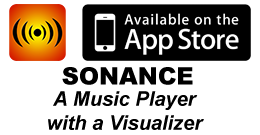

|
| Televisions, Flatscreens, HDTV | |||||||||||||||||||
What's My IP Address ? It is : 216.73.216.171Your Browser Identifier (User Agent) is :Mozilla/5.0 AppleWebKit/537.36 (KHTML, like Gecko; compatible; ClaudeBot/1.0; +claudebot@anthropic.com) |
|||||||||||||||||||
|
Your IP Address is : 216.73.216.171 Your IP Port is : 57652 Your Host Name is : 216.73.216.171 |
|
||||||||||||||||||
|
Gift Giving Hub 
|
|||||||||||||||||||
IP Address Classification, IPv4IP, Short for Internet Protocol, is an address of a computer or other network device on a network using IP or TCP/IP ( Transmission Control Protocol / Internet Protocol ). For Example, the number "166.70.10.23" is an example of such an address. These addresses are similar to addresses used on houses and help data reach its appropriate destination on a network. There are five classes of available IP ranges: Class A, Class B, Class C, Class D and Class E, while only A, B and C are commonly used. Each class allows for a range of valid IP addresses. Below is a listing of these addresses. |
|||||||||||||||||||
Ranges 127.x.x.x are reserved for loopback tests, for example, 127.0.0.1. Ranges 255.255.255.255 are used to broadcast to all hosts on the local network. |
|||||||||||||||||||
What is IPv4 and IPv6 ?IPv4 and IPv6 refer to versions of Internet Protocol Addressing schemes. IPv4 was adopted in the fall of 1989. as mentioned above it consists of 4 numbers in the range of ( 0 thru 255 ) separated by the "." period character. IPv4 stands for Internet Protocol ( IP ) version 4. IPv4 superceded version 3, IPv3. IPv3 consisted of 3 numbers in the range of ( 0 thru 255 ). IPv3 supported 16,777,216 addresses ( 256 x 256 x 256, 256 ^ 3 ). We quickly ran out of addresses even before the "internet" and "world wide web" were common household names. So in the fall of 1989, IPv4 came along, and supports 4,294,967,296 (256 x 256 x 256 x 256, 256 ^ 4) addresses. We have used some smart tricks to use these efficiently, like DHCP and NAT, but we still ran out of addresses. June 8, 2011. IPv6, version 6. Yes, we skipped version 5. This version is a different beast entirely. IPv6 consists of 8 numbers in the range of ( 0 thru 65535 ), separated by a ":" colon character, and written using the Hexadecimal format or numbering system. IPv6 supports 65536 ^ 8, or 3.4×10^38 addresses. Here is an example of a full IPv6 address. FE80:0000:0000:0000:0202:B3FF:FE1E:8329 This can also be written in a compressed form as: FE80::0202:B3FF:FE1E:8329. How many is 3.4 x 10 ^ 38 ? it's pronounced 340 Undecillion , 340 x 10 ^ 36, or 3.4 x 10 ^ 38. So, when the earth reaches 7 Billion people (7,000,000,000), as we are at 6.9 billion in July 2011, then each of the 30 trillon red blood cells (30,000,000,000,000) per person, could have 1.6 quadrillion (1,619,047,620,000,000) ip addresses for itself. It's the first time in the history of mankind, that someone could request a trillion of something, with the exception of germs, and actually get it. |
|||||||||||||||||||
iOS, macOS & Android apps brought to you by Rare Works, LLC

 

 

  |
|||||||||||||||||||
|
Cryptocurrency Faucets - Free Bitcoin, Bitcoin Cash, Litecoin, Dogecoin, Dash |
||
FasterTechnologies.com is website aimed at bringing conveniances to the internet community. Pretty much this means that anything that I can improve upon, I will, and you can find it here. From lessons I've learned building this website, to tools I've written to aid both novice user and webmaster alike. Please use the tools, and enjoy the site.
|
|